News
Shallow water
EEXI
Wind propulsion
Turbulent breakthrough
CFD VIM
Floating Wind
Shortsea shipping
Cover
Create a MARIN account to stay updated

December 2023, no. 138
Report


Tripping JIP

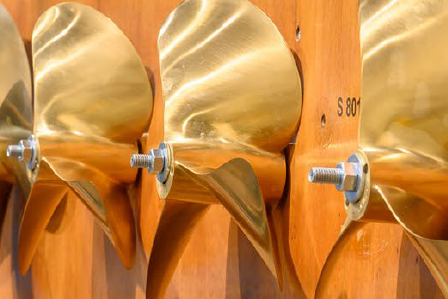
Alert JIP

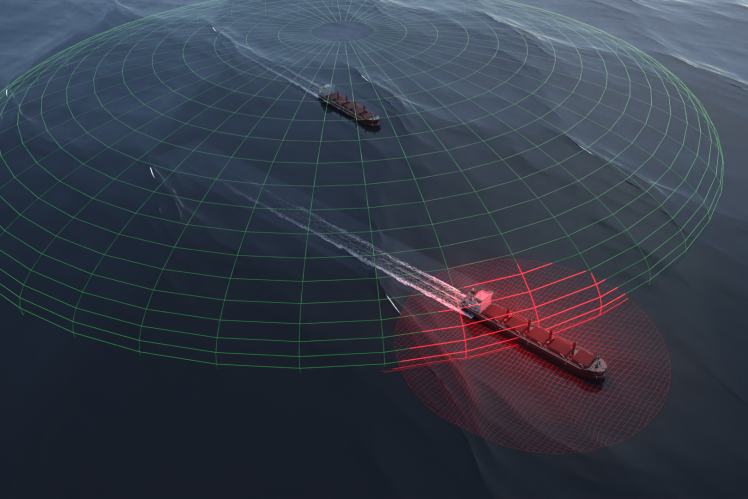



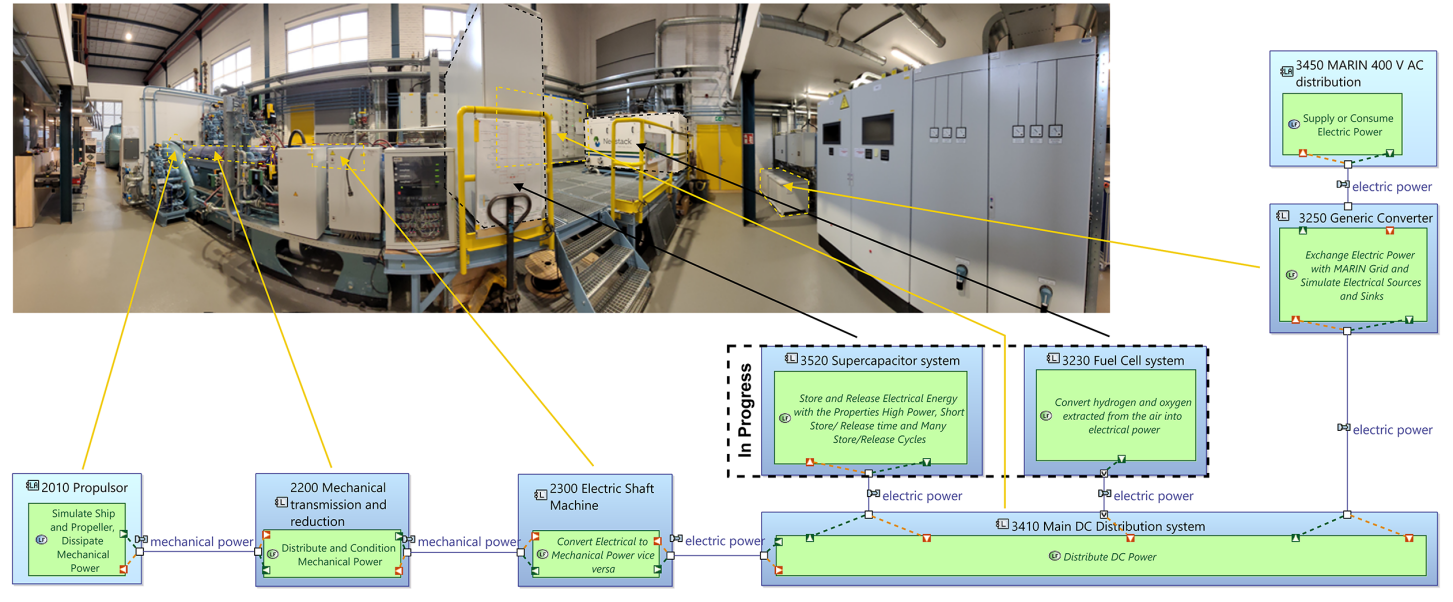
Back to In Short
Click to enlarge
News
Shallow water
EEXI
Wind propulsion
Turbulent breakthrough
CFD VIM
Floating Wind
Shortsea shipping
Cover
Several types of electrical suppliers can be connected to this grid. In this case a converter in combination with a model-in-the-loop is used which simulates the fuel cells and batteries. Tests show the influence of the propeller on the stability of the DC grid. The next step is to integrate a fuel cell, generator and storage systems to study the behaviour of the ZEL in even more detail.
The new Zero Emissions Lab (ZEL) is up and running! The Lab will be used to validate and demonstrate the dynamic behaviour of a ship engine room. The first test case was a patrol vessel to be fitted with fuel cells and batteries.
Propeller torque variations due to seakeeping and manoeuvring are simulated and inserted onto the shaft line using the combination of a propeller in the cavitation tunnel and a servo motor. The shaft is driven by an electric motor which draws its power from the 700VDC grid which forms the backbone of the ZEL
Back to In Short
News
Shallow water
EEXI
Wind propulsion
Turbulent breakthrough
CFD VIM
Floating Wind
Shortsea shipping
Cover

New participants are welcome to join so we can work together and develop a reliable basis for future powering predictions. The complete proposal and work packages can be found at www.marin.nl/jips/tripping.
The aim of the Tripping JIP is to develop new propeller scale corrections to predict full-scale open water performance and propulsive performance more accurately.
At full-scale, propellers usually operate with a turbulent flow, but at model-scale a laminar flow results in uncertainty regarding the accuracy of model tests and powering predictions. In the Tripping JIP, turbulators will be applied on a large set of model-scale propellers to trip towards a turbulent flow, therefore resembling the full-scale situation more accurately. The Wageningen B-series will be revisited, as well as propellers from the newer Wageningen C- and F-series. The Reynolds scale effects for a fully turbulent flow will be assessed by RANS computations. The Tripping JIP will provide new scale corrections (to replace the old ITTC corrections), correlation allowances for RANS computations and a full-scale polynomial for the Wageningen B-series.
Tripping | Joint Industry Project
Back to In Short
News
Shallow water
EEXI
Wind propulsion
Turbulent breakthrough
CFD VIM
Floating Wind
Shortsea shipping
Cover
Alert | Joint Industry Project
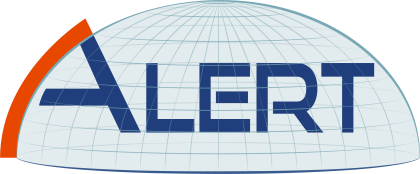
The Alert JIP takes a radically different approach, establishing when the navigation spaces can be left unattended for periods of time without jeopardising safety while systems and processes are in place to alert the watchstander when their presence is needed.
New participants are very welcome to join. Together we can create safe blue oceans and ships without fatigued crew members! For more information visit www.marin.nl/jips/alert.
Without any prospects of improvements, such working conditions also cause well-trained and highly educated individuals to leave the profession, resulting in continual hiring and training to be part of the regular ship operation. The ongoing hiring and training processes not only cause an additional strain on the onboard operation, but also are a huge financial burden and an unfortunate waste of highly skilled talent.
Despite several research projects in the past to address fatigue, no significant improvements have been made to the conditions on board.
The Alert JIP is developing a framework for periodically unattended navigation spaces and examining whether these spaces improve the safety, working and living situation for the crew.
Fatigue, due to irregular working and sleeping hours and monotonous (boring) working conditions, negatively affect watchstanders across the maritime industry. Combined with excessive working hours when the ship is in port or when it transits busy shipping areas, fatigue is frequently the cause of (near-) accidents and incidents.
Back to In Short
News
Shallow water
EEXI
Wind propulsion
Turbulent breakthrough
CFD VIM
Floating Wind
Shortsea shipping
Cover
Mauro, F., Della Valentina, E., Ferrari, V., Begovic, E.,
Ocean Engineering, Volume 287, Nov 1, 2023


Back to In Short
News
Shallow water
EEXI
Wind propulsion
Turbulent breakthrough
CFD VIM
Floating Wind
Shortsea shipping
Cover
Do you enjoy participating in projects and feel that working collaboratively together is key to achieving more? We invite you to explore our career opportunities: marin.nl/careers and linkedin.com/company/marin/jobs.
MARIN is growing – We’re not just expanding our team for our customer projects, but we are also welcoming new colleagues who work on the nine perspectives of our MARIN strategy ‘Beyond the Horizon’. We are actively searching for people with different types of knowledge and skills. Last year, around 50 new colleagues started and this year we are recruiting at the same pace. Each new employee is welcomed and supported with a tailored onboarding programme so they can familiarise themselves with MARIN and get to know our open culture and fields of expertise.
We are looking for people with naval architecture knowledge, software engineers, data scientists and other fields of expertise (mathematics, safety, autonomous decision-making, human factors and more).
At MARIN, we value knowledge and an open, positive mindset.
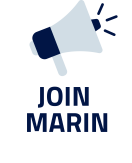
Tripping JIP






Alert JIP




Mrt.
17-21
International Symposium on Marine Propulsors
Conferences
Mrt.
11-5
Hydrodynamics in Ship Design
Courses
Feb.
5-7
Floating Wind Solutions
Trade
Apr.
8-12
Blueweek 2024
Conferences
MARIN will be present at the following events. Let’s meet up again soon!
December 2023,
no. 138
Create a MARIN account to stay updated

Report
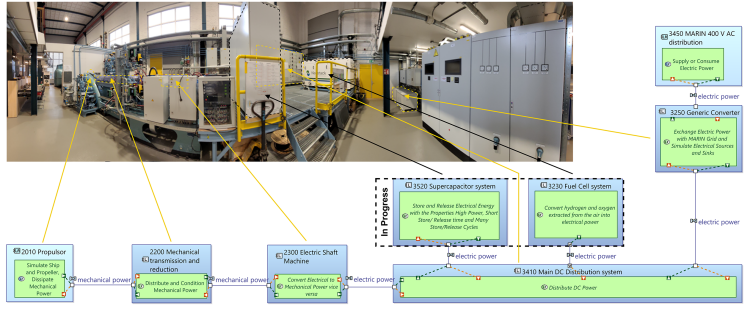
Click to enlarge
Several types of electrical suppliers can be connected to this grid. In this case a converter in combination with a model-in-the-loop is used which simulates the fuel cells and batteries. Tests show the influence of the propeller on the stability of the DC grid. The next step is to integrate a fuel cell, generator and storage systems to study the behaviour of the ZEL in even more detail.
The new Zero Emissions Lab (ZEL) is up and running! The Lab will be used to validate and demonstrate the dynamic behaviour of a ship engine room. The first test case was a patrol vessel to be fitted with fuel cells and batteries.
Propeller torque variations due to seakeeping and manoeuvring are simulated and inserted onto the shaft line using the combination of a propeller in the cavitation tunnel and a servo motor. The shaft is driven by an electric motor which draws its power from the 700VDC grid which forms the backbone of the ZEL

New participants are welcome to join so we can work together and develop a reliable basis for future powering predictions. The complete proposal and work packages can be found at www.marin.nl/jips/tripping.
The aim of the Tripping JIP is to develop new propeller scale corrections to predict full-scale open water performance and propulsive performance more accurately.
At full-scale, propellers usually operate with a turbulent flow, but at model-scale a laminar flow results in uncertainty regarding the accuracy of model tests and powering predictions. In the Tripping JIP, turbulators will be applied on a large set of model-scale propellers to trip towards a turbulent flow, therefore resembling the full-scale situation more accurately. The Wageningen B-series will be revisited, as well as propellers from the newer Wageningen C- and F-series. The Reynolds scale effects for a fully turbulent flow will be assessed by RANS computations. The Tripping JIP will provide new scale corrections (to replace the old ITTC corrections), correlation allowances for RANS computations and a full-scale polynomial for the Wageningen B-series.
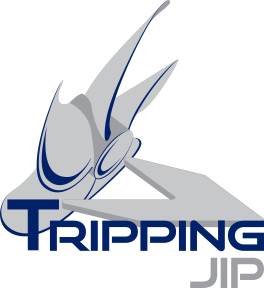
Tripping | Joint Industry Project


The Alert JIP is developing a framework for periodically unattended navigation spaces and examining whether these spaces improve the safety, working and living situation for the crew.
Fatigue, due to irregular working and sleeping hours and monotonous (boring) working conditions, negatively affect watchstanders across the maritime industry. Combined with excessive working hours when the ship is in port or when it transits busy shipping areas, fatigue is frequently the cause of (near-) accidents and incidents.
Without any prospects of improvements, such working conditions also cause well-trained and highly educated individuals to leave the profession, resulting in continual hiring and training to be part of the regular ship operation. The ongoing hiring and training processes not only cause an additional strain on the onboard operation, but also are a huge financial burden and an unfortunate waste of highly skilled talent.
Despite several research projects in the past to address fatigue, no significant improvements have been made to the conditions on board.
The Alert JIP takes a radically different approach, establishing when the navigation spaces can be left unattended for periods of time without jeopardising safety while systems and processes are in place to alert the watchstander when their presence is needed.
New participants are very welcome to join. Together we can create safe blue oceans and ships without fatigued crew members! For more information visit www.marin.nl/jips/alert.
Alert | Joint Industry Project

Mauro, F., Della Valentina, E., Ferrari, V., Begovic, E.,
Ocean Engineering, Volume 287, Nov 1, 2023



MARIN is growing – We’re not just expanding our team for our customer projects, but we are also welcoming new colleagues who work on the nine perspectives of our MARIN strategy ‘Beyond the Horizon’. We are actively searching for people with different types of knowledge and skills. Last year, around 50 new colleagues started and this year we are recruiting at the same pace. Each new employee is welcomed and supported with a tailored onboarding programme so they can familiarise themselves with MARIN and get to know our open culture and fields of expertise.
We are looking for people with naval architecture knowledge, software engineers, data scientists and other fields of expertise (mathematics, safety, autonomous decision-making, human factors and more).
At MARIN, we value knowledge and an open, positive mindset.
Do you enjoy participating in projects and feel that working collaboratively together is key to achieving more? We invite you to explore our career opportunities: marin.nl/careers and linkedin.com/company/marin/jobs.

